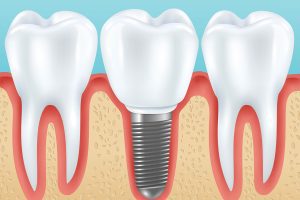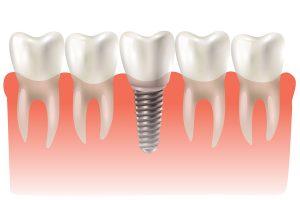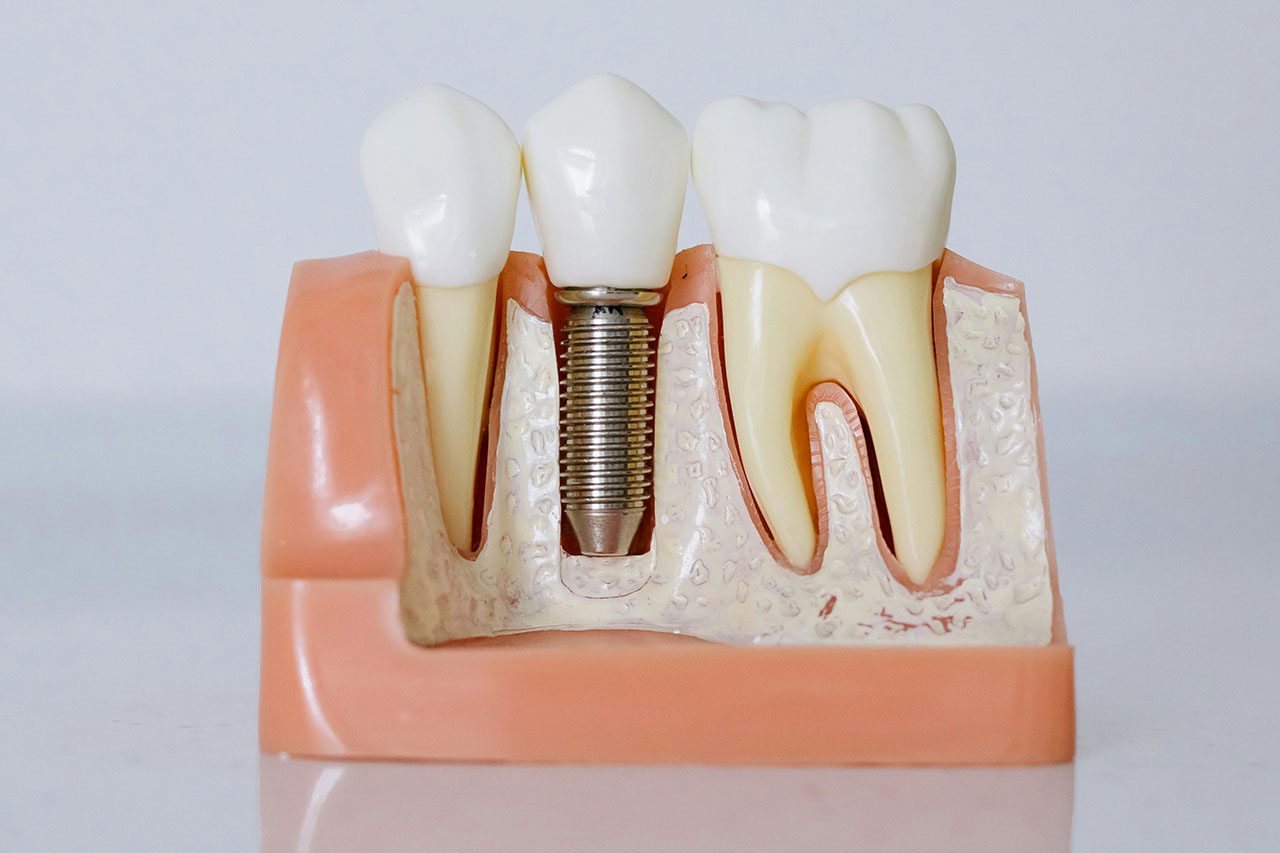Losing a tooth impacts more than just your smile; it affects confidence and chewing ability. Dental implants offer a durable, natural-feeling solution for replacing missing teeth. For Australians considering this treatment, a key decision, made with a dental professional, is the timing of implant placement after tooth extraction: immediate or delayed. Understanding these pathways is crucial for an informed discussion about your oral health.
Immediate Dental Implants: The Express Route
Immediate dental implants (Type I placement) involve placing the implant fixture into the fresh extraction socket right after tooth removal, often in the same appointment. This approach has gained acceptance and can show high survival rates when criteria are met. The procedure generally involves local anaesthetic, careful tooth extraction preserving bone, socket inspection, and immediate implant insertion, ensuring good primary stability – a critical factor for success. If conditions are ideal (good stability, sufficient bone), a temporary crown might be attached quickly (immediate loading). Otherwise, a healing cap is placed, or the implant is covered by gum tissue. The main appeal of this method for Sydney dental implants is efficiency, combining steps and potentially reducing overall treatment time.
Delayed Dental Implants: A Staged Healing Process

Delayed dental implants involve a planned waiting period between extraction and implant placement, allowing the site to heal. This delay varies:
- Early placement (Type II): Roughly 4-8 weeks post-extraction, after soft tissues heal.
- Early placement with partial bone healing (Type III): Around 12-16 weeks post-extraction, allowing some bone fill.
- Late placement (Type IV): Four to six months or longer post-extraction, for more complete tissue healing, especially if bone grafting was performed. A graft might need 3-6 months to mature.
The delayed procedure for tooth implants Sydney is typically staged:
- Tooth Extraction & Site Preparation: The tooth is removed. Infection is cleaned, and bone grafting (socket preservation) may be done if bone volume is low.
- Healing Period: This lasts 2-6+ months. A temporary prosthesis might be used.
- Implant Placement Surgery: Once healed, the implant is surgically placed into the prepared bone.
- Osseointegration: Over 3-6 months, the jawbone fuses with the implant, creating a stable base.
- Final Restoration: An abutment (connector) is attached, followed by the custom-made final crown or bridge. This approach aims for a predictable environment, especially in challenging clinical situations.
Weighing the Pros and Cons
The choice involves comparing benefits and drawbacks.
Immediate Implants: Advantages
- Shorter overall treatment time.
- Fewer primary surgical visits.
- Potential for preserving bone and gum tissue contours under ideal conditions.
- Improved aesthetics, especially with an immediate temporary in visible areas.
Immediate Implants: Potential Drawbacks
- Strict candidacy: Requires excellent site conditions, including sufficient bone and no acute infection.
- Potentially higher risk of complications if conditions aren’t optimal. A significant 6-year study reported lower intermediate-term survival rates (53.2%) compared to delayed implants (81.1%).
- More technique-sensitive.
- Bone grafting might still be needed.
- Possible aesthetic challenges like gum recession if tissues are thin.
Delayed Implants: Advantages
- Higher predictability in compromised sites, allowing time for healing and bone regeneration.
- Better potential for bone integration in a healed, possibly augmented ridge.
- Reduced risk of complications related to poor initial site quality.
- Suitable for a wider range of patients, including those needing substantial grafting.
Delayed Implants: Potential Drawbacks
- Longer overall treatment timeline.
- Multiple surgical procedures.
- Potential for bone resorption during healing if the socket isn’t grafted.
- Often requires a temporary removable prosthesis during healing.
Clinical Outcomes: A Summary of Evidence

Both Dental Implants sydney approaches can achieve high success.
- Survival Rates: While some meta-analyses show comparable survival (around 97% ), the 6-year retrospective study found significantly higher survival for delayed implants at 72 months (81.1% vs 53.2% for immediate). This study also identified male sex and osteoporosis as risk factors. The Cochrane Review noted insufficient definitive evidence from trials to determine the superiority of any specific timing protocol.
- Bone and Gum Health: Findings on marginal bone loss vary. Immediate placement can help support gum contours if conditions are right, but gum recession is a risk if tissues are thin or bone is compromised.
- Complications: General surgical risks exist. For immediate implants, risks can be higher if site conditions are suboptimal. One review suggested immediate implants had threefold early and twofold delayed complications compared to delayed protocols.
Good oral hygiene, managed gum disease, sufficient bone density, and stable overall health are vital for any implant. Smoking is a major detrimental factor and increased the cost of dental implants Sydney. While patients may seek affordable dental implants Sydney, or even research cheap dental implants Sydney, the focus should be on quality care, materials, and long-term success. A detailed consultation will clarify all costs.
Making Your Informed Decision
Choosing between immediate and delayed dental implants is highly individualised. Immediate implants offer speed and potentially fewer surgeries in ideal conditions but demand strict site prerequisites. Delayed implants allow for site optimisation, offering greater predictability in compromised situations, though with a longer timeline. A comprehensive consultation with an experienced dental clinician is essential to develop a personalised plan.
Frequently Asked Questions (FAQs)
1. What is the main difference in treatment time between immediate and delayed implants? Immediate implants aim to reduce overall treatment duration by placing the implant at the same time as tooth extraction, potentially allowing for a temporary tooth quickly. Delayed implants involve distinct healing phases: first after extraction (2-6 months, possibly longer if grafting is needed ), and then after implant placement (3-6 months for osseointegration ), making the entire process longer.
2. Are immediate implants more painful than delayed implants? The surgical aspect of implant placement involves similar discomfort levels, managed effectively with local anaesthesia. Post-operative experiences like swelling or mild pain are typical for any oral surgery. Immediate implants combine extraction and placement into one surgical event, which might mean fewer separate recovery periods compared to the multiple distinct surgical stages common with delayed protocols.
3. If I have an infection, can I still get an immediate implant? Generally, placing an implant immediately into an acutely infected site is considered riskier and may compromise success. One study noted a threefold higher failure rate in such scenarios. A delayed approach is usually preferred to allow the infection to clear and the site to heal properly, thereby creating a healthier and more predictable foundation for the implant.
4. What if I don’t have enough bone for an implant? Insufficient bone volume is a key factor guiding treatment towards a delayed approach. This allows for bone grafting procedures, where new bone material is added to rebuild the jaw. After a healing period for the graft to mature and integrate (often several months ), the implant can then be placed into this strengthened, augmented bone.
5. How do I know which type of implant timing is right for me? The most appropriate implant timing is a clinical decision made by your dental professional after a comprehensive evaluation. This includes assessing the extraction site, bone quantity and quality, gum health, the reason for tooth loss, your overall health, and aesthetic expectations. This detailed assessment ensures a personalised treatment plan for optimal, lasting results.

